Legend has it that General Motors once successfully fielded a hierarchy of five brands, each one catering to a separate stratum of buyers. People would start with Chevrolet then move up as their careers progressed, with the most successful ultimately buying Buicks then Cadillacs.
Two of the five rungs are now gone, and Buick's long-term survival in North America is far from certain. While both mainstream brands and premium brands have been doing well, those in between have been struggling. In response, Chrysler has been shifting downmarket. Once a direct competitor to Buick, it now aims to be considered a mainstream brand like Chevrolet, Ford, Honda, and Toyota.
Buick cannot do the same, as Chevrolet won't step out of its way like Dodge has stepped out of Chrysler's. Its cars must continue to command significantly higher selling prices than Chevrolet's or Chrysler's, but not as high as Cadillac's.
Compare a Buick Regal GS to a Chrysler 200S, and the former is at least $4,000 more. What does it offer to justify this premium?
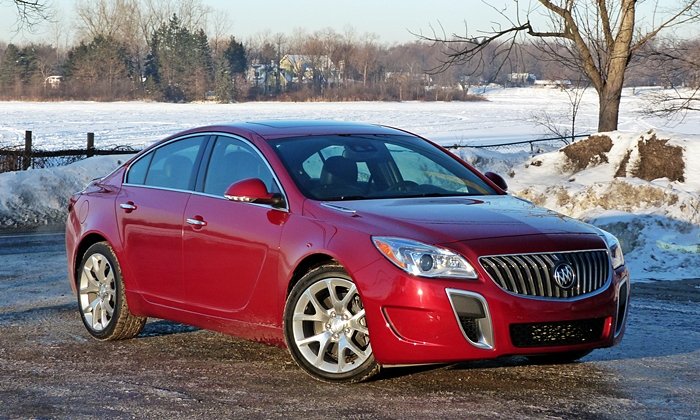
Can styling be too clean--does this car make enough of a statement? more Regal photos
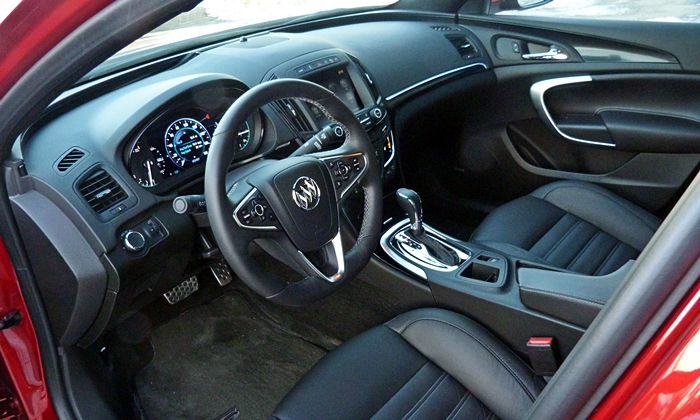
More German than the Germans? Very solidly constructed, very dark.
| |
Compared to the 200 |
| Materials & workmanship |
 Better
Worse
Better
Worse
|
From the moment you first pull the door closed (with a deep thunk), the strongest impression made by the Buick Regal GS is that, from its interior trim to its body structure to its suspension tuning, it is rock-solid. You won't find a car that feels more German from any other non-German make. Perhaps this should come as no surprise, as the Regal was engineered and initially manufactured in Germany, where a nearly identical car is sold as the Opel Insignia. Production of North American Regals shifted to Canada a couple years ago, but the look and feel of the car were not affected.
The new 2015 Chrysler 200 also has European roots, but Italian not German. It is also heavy for its size (these specs being close to the Regal's), and it feels solid, but not as granitic as the Buick. Also, its interior materials aren't as consistently high in quality.
| Driving position & visibility |
 Better
Worse
Better
Worse
|
Unlike the larger, distantly related Buick LaCrosse, the Regal's instrument panel doesn't extend far ahead of the driver and the pillars flanking its windshield aren't incredibly thick. Perhaps Europeans expect to be able to see out of a car well, and the Regal was designed accordingly.
The new Chrysler 200's instrument panel is deeper (though its design disguises some of this depth) and you sit lower relative to it. So the Chrysler 200 feels like a larger, less wieldly car than the Regal (partly because it is, but also due to its driving position). Other cars, such as the Ford Fusion and especially the aforementioned LaCrosse, distance the driver even more from the task at hand.
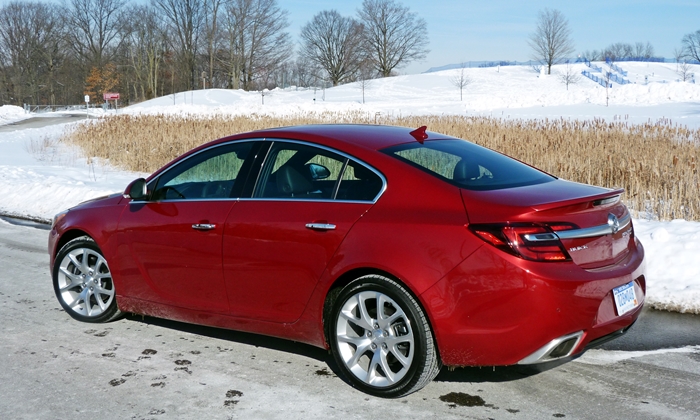
Tall bodysides make the Regal appear as solid as it is.
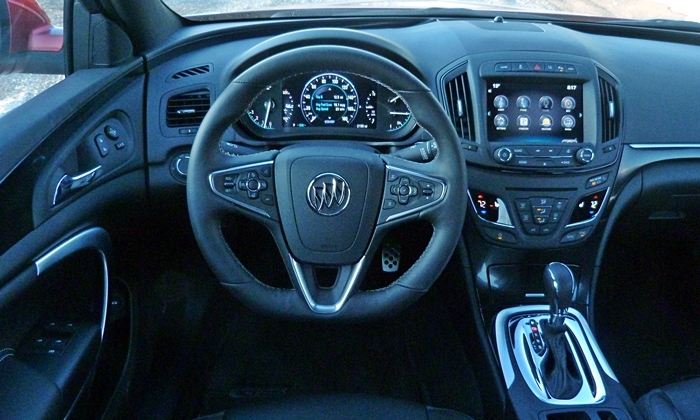
The new controls are laid out well, but could operate better.
| Quietness |
 Better
Worse
Better
Worse
|
Aside from some buzziness when its engine is revved and some hum from the performance tires on concrete, the Buick Regal is a very quiet car. Beyond the low overall noise level, the quality of the sounds that do get through (with the noted exceptions) befit an upscale automobile.
The Chrysler 200 is also quiet inside, but not as hushed as the Buick.
The Regal has top scores in all of the IIHS tests except the new one for small overlap frontal crashes, where it hasn't been tested.
Beyond this, the Regal GS is fitted with especially effective Brembo brakes. Brakes of this caliber are generally only found on much more expensive midsize sedans.
| |
Compared to the 200 |
| Price or payments |
 Better
Worse
Better
Worse
|
As noted in the introduction, the Buick Regal GS lists for about $5,700 more than the Chrysler 200S even when the latter is optioned up to the former's higher base content level. With all-wheel-drive its starting price is over $40,000. Additional features account for about $1,400 of the difference, leaving a still substantial $4,300. Switch to the more luxury-oriented Chrysler 200C and fully load up both cars (pushing the Regal's sticker to $43,855), and the Chrysler's price advantage doubles.
The Regal's relatively high price leads many people to wonder, "Why not just get a Cadillac ATS?" Well, a similarly equipped ATS lists for another $5,770.
| Fuel economy |
 Better
Worse
Better
Worse
|
The Buick Regal and Chrysler 200 both weigh substantially more than just about any other front-wheel-drive midsize sedan. Add all-wheel-drive, and both weigh nearly two tons. Curb weight is the enemy of fuel economy. The Buick's turbocharged four-cylinder engine is more efficient than the Chrysler's V6, so it has an edge in the EPA's city test, 19 vs. 18 mpg. But the Chrysler's automatic transmission has three extra gears, for a total of nine, so it has the edge on the EPA's highway test, 29 vs. 27 mpg. The Ford Fusion, though far from light, has an edge over both: 22 mpg city, 31 mpg highway.
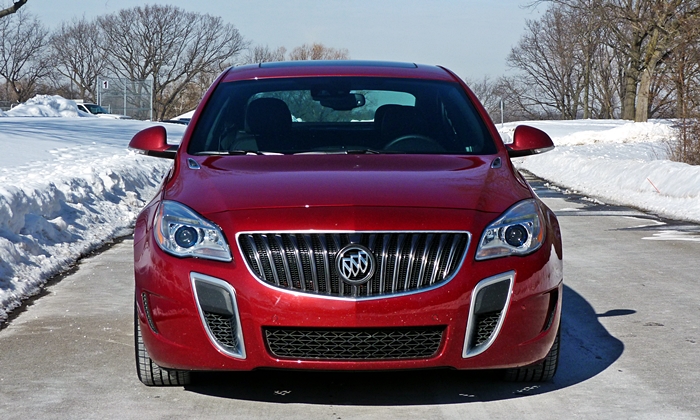
Lower front fascia borrowed from Opel is aggressive yet clean.
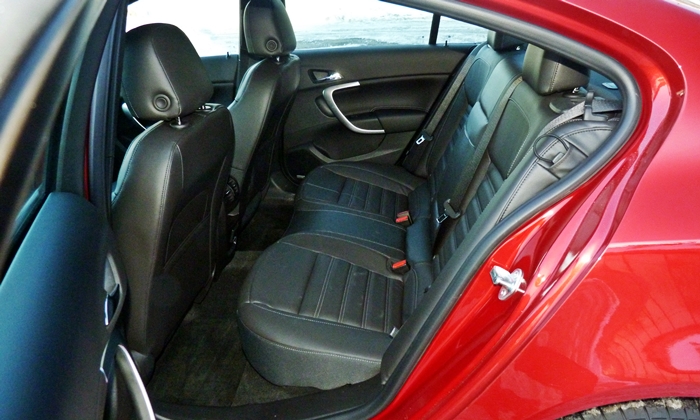
Tighter than the midsize average.
| Front seat support & comfort |
 Better
Worse
Better
Worse
|
The front bucket seats in the Buick Regal GS have larger side bolsters than those in other Regals, and these effectively provide lateral support in hard turns. But the center panels of the seats feel flat and overly firm. On some days even 20 minutes in the seat made for a slightly sore rear. The front buckets in the Chrysler 200S are cushier, but despite larger side bolsters than those in the regular 200 do not effectively provide lateral support. In both cars the headrest sometimes felt like it was positioned too far forward for comfort, but I have a more upright build than most people.
| Rear seat room & comfort |
 Better
Worse
Better
Worse
|
Both the Regal and 200 have much less rear seat room than the average midsize sedan. Adults up to about six feet in height will fit, but with little room to spare.
| |
Compared to the 200 |
| Exterior styling |
 Better
Worse
Better
Worse
|
Both the Buick Regal and Chrysler 200 have clean, fluid exteriors with more than a little Audi influence. The 200's design is more dramatic, with a more coupe-like roof line, but its proportions aren't as good as the more subtly attractive Regal.
| Controls and instruments |
 Better
Worse
Better
Worse
|
Inside, the story is much the same. The Regal's interior styling is more tasteful, but less dramatic and perhaps overly dark due to the lack of anything like the Chrysler 200S's blue accents.
The 2014's Regal's revised instrument panel design is cleaner, with fewer buttons. This dramatic reduction in the button count makes most controls easier to figure out and operate. But the new touch-sensitive mini-LCD HVAC and seat heater controls provide no feedback and can be slow to respond. At times I had to tap them two to three times to get a response. Some of these times I then got a larger change in the temperature setting than I'd intended. The upper part of the center stack, which includes a touchscreen, is too far away to reach easily, and buttons along the top edge of this screen tend to wash out in sunlight.
In contrast, the Chrysler 200's controls are about as good as they get.
| Powertrain performance |
 Better
Worse
Better
Worse
|
With the 2012 and 2013 Regal, you could choose among four engines: a 182-horsepower 2.4-liter four-cylinder, a mild hybrid version of the same, a 220-horsepower turbocharged 2.0-liter four-cylinder, and, in the GS only, a 270-horsepower version of the preceding.
Of the four, only the hybrid continued to the 2014 model year. The old base engine is gone, perhaps because the people who might opt for it are now likely to opt for the less expensive Verano. And both turbocharged engines have been replaced by a new generation turbocharged 2.0-liter four-cylinder good for 259 horsepower.
In other words, the GS no longer has a diffferent engine than other Regals.
The new turbo four makes the car fairly quick--figure about seven seconds to 60. But some less expensive competitors are quicker still. Of greater concern to me personally: the new engine buzzes and vibrates, surges and lulls a little in fairly casual driving. Given the GS's price, it should feel smoother, sing a more titilating song when revved, and be quieter otherwise.
The Chrysler's 295-horsepower 3.6-liter V6 sounds much better, and is more fun to wind out.
Update: If you'd prefer a manual transmission, for 2015 the Buick Regal GS is the only midsize sedan other than the far pricier BMW 5-Series to offer one in conjunction with premium features (leather upholstery, nav, sunroof). You can't get the manual with all-wheel-drive, though.
As noted above, when the time comes to decrease rather than increase speed, the GS does have different brakes than other Regals. And its Brembo calipers are strong.
| Handling |
 Better
Worse
Better
Worse
|
In the GS, the regular Regal's conventional struts are replaced by "Hiper Struts" that eliminate torque steer (rarely an issue with all-wheel-drive) and keep the front tires more perpendicular to the road surface as they move through their travel, for superior composure and grip. The GS also gets adaptive dampers with three settings. In any of the three, but especially in "Sport" and "GS," the suspension feels tight and firm. "GS" should be reserved for especially smooth roads. The optional all-wheel-drive system includes a couple of electronically controlled clutch packs, one to shunt up to half of the engine's torque to the rear, which it more readily does in either sport mode, the other for the limited-slip rear differential. These effectively distribute the engine's torque to further enhance stability.
Put all of these systems together, and the Regal handles with the sort of precision and composure usually found only in Europe's best cars. It doesn't have quite the same "damn the torpedos" tenacity when powering out of curves as some Audis, but this is more a matter of engine torque (the 2.0T's 295 lb-ft is good for a four, but no match for an S4's supercharged 3.0-liter V6) than the drive train and suspension. By any objective measure, the Regal GS handles very well.
So why isn't handling about the reasons to buy the Buick? What the Regal GS doesn't do is involve the driver. The Hiper Strut suspension's geometry reduces the tendency of the steering to weight up as the wheel is turned. Whatever feedback makes it through anyway tends to get smothered by the overly padded steering wheel rim. The sport modes are supposed to firm up the steering, but I detected little if any effect.
The Chrysler 200's suspension controls body motions well, but it doesn't feel as Euro-tight or as balanced as the Regal, its steering is overly heavy and somewhat vague, and its steering wheel rim is even thicker. Also, even though the two cars are similar in size, the Chrysler feels larger and less agile. Blame its heavier steering, deeper instrument panel, and lower driving position.
| Ride smoothness |
 Better
Worse
Better
Worse
|
The flipside of the Buick Regal's tight and precise suspension is that it also rides very firmly. The upper two adaptive damper settings evoke some fairly sharp kicks on all but the smoothest roads. If this could be a deal-breaker, check out the regular Regal, with the same engine and interior but a more compliant suspension and a lower price.
I haven't yet had the opportunity to drive the new Chrysler 200S on particularly bad roads, but it seems to ride more smoothly than the Regal GS.
American driving enthusiasts, myself among them, have been begging General Motors and Ford to offer their European-market cars in North America for years. So I really want to like the Buick Regal GS. It's a thoroughly German car, offered by a domestic brand at a price much lower than the German makes would charge. And the Regal GS performs well, especially when the road curves. The problem is, despite (or even because of) its high level of competence, there's little joy to be had when driving the Buick. The Regal GS needs more personality.
Ultimately, its strongest selling point isn't it's performance and handling, but its superior solidity and refinement. It feels like a top-quality car. This is easily worth $10,000 when part of one of those fancy brand sedans. But is it sufficient to justify a $4,000 to $5,000 bump on an "American" car without a prestigious badge? I'd like to think so. Perhaps too few people have even given the Regal a shot.
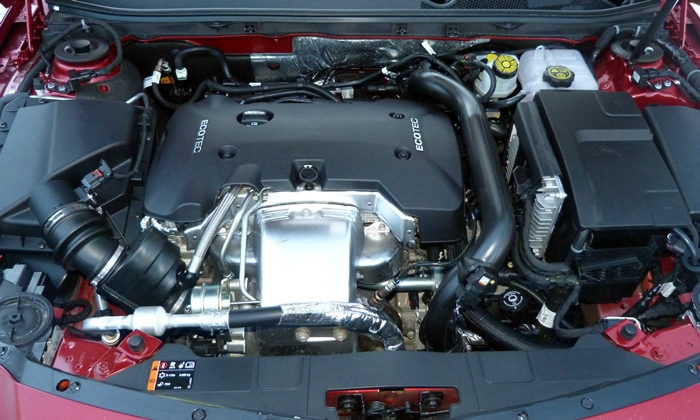
Same engine as in other Regals for 2014.
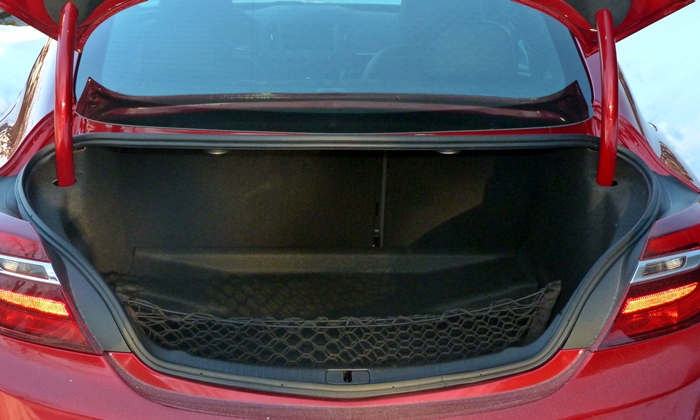
14.2 cubic foot trunk nearly two cubes short of most, including the Chrysler's.
See more 2014 Buick Regal photos
Buick provided an insured car for a week with a tank of gas. Chrysler provided a car at a media association event.











